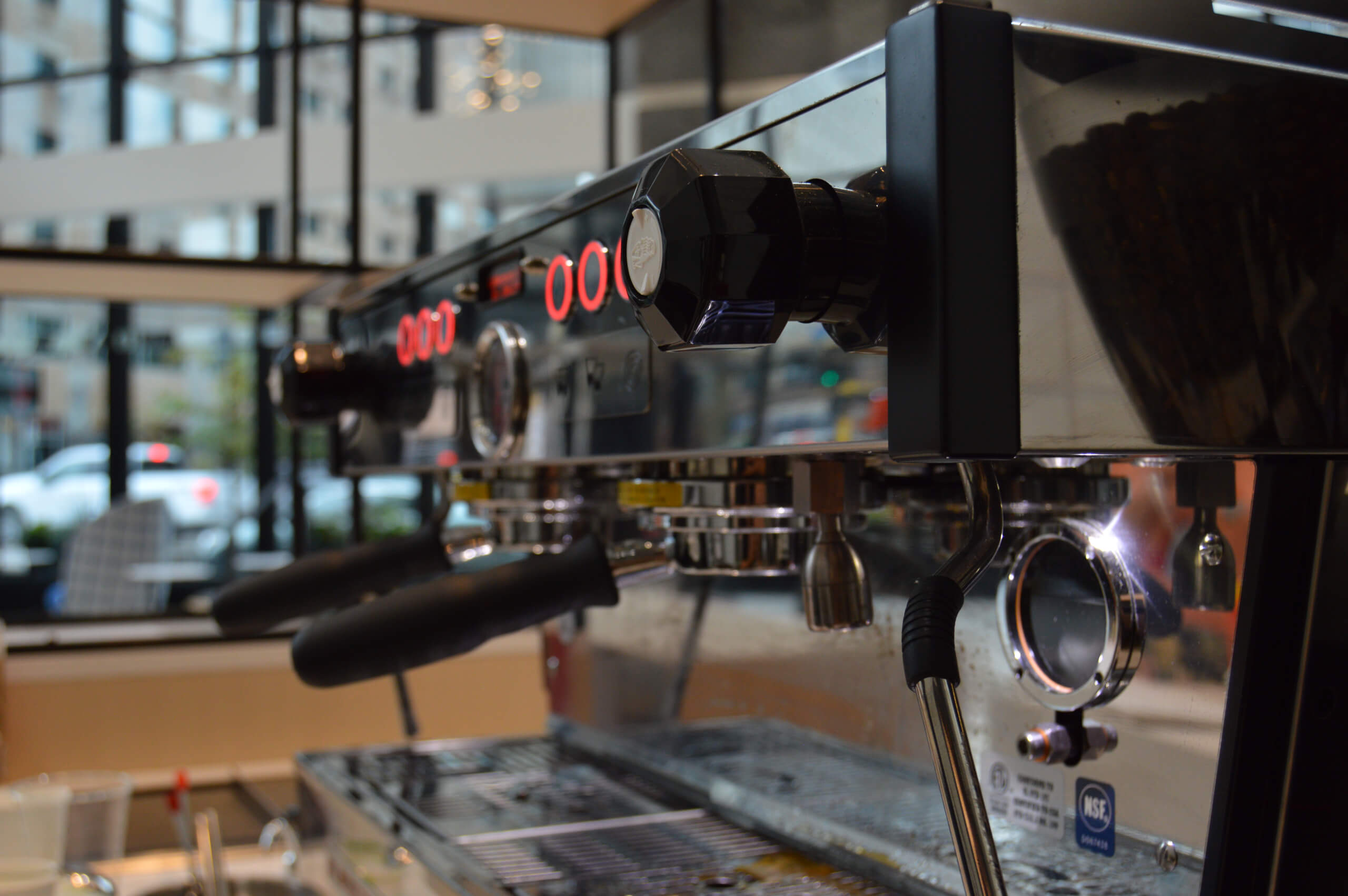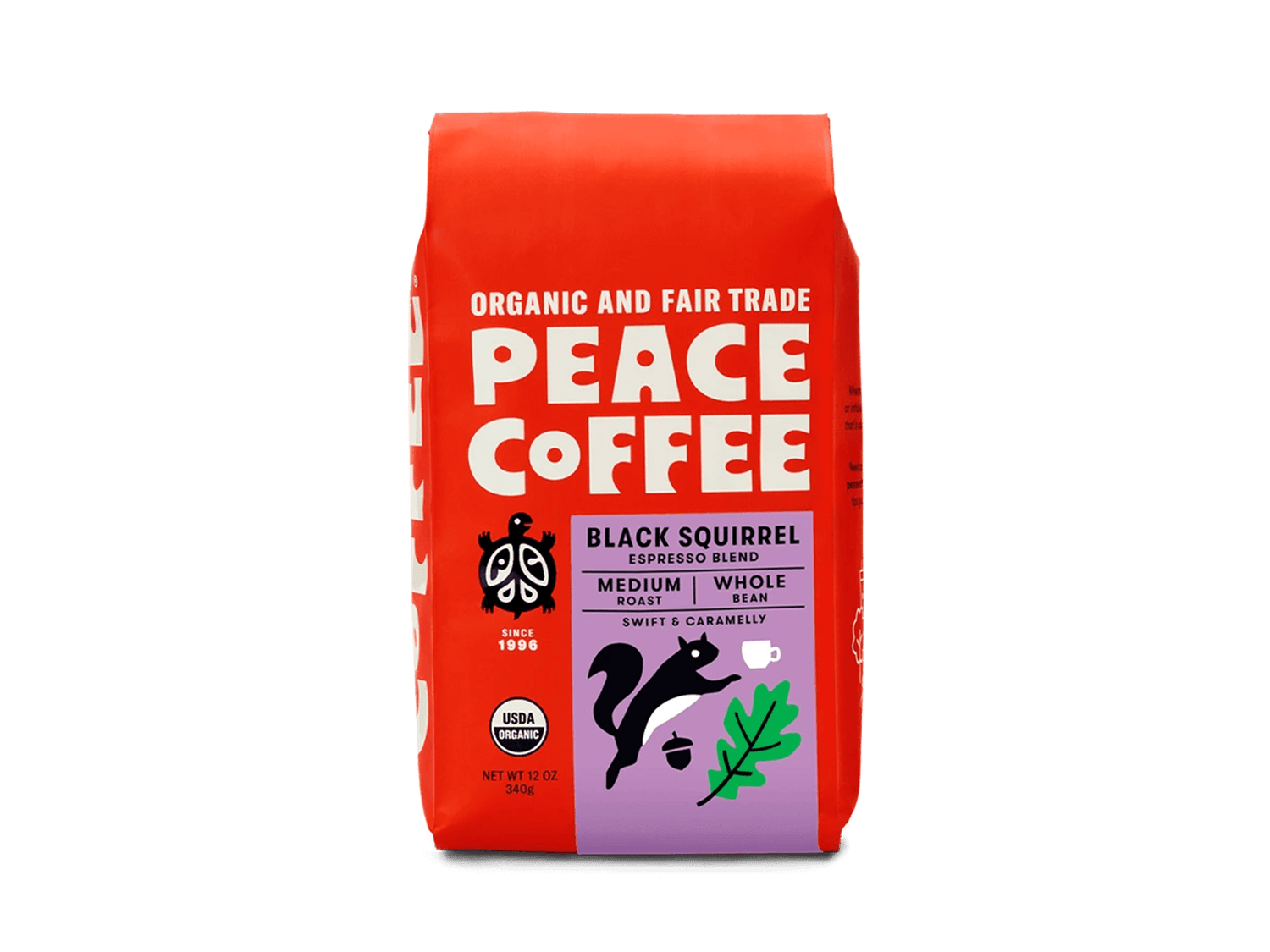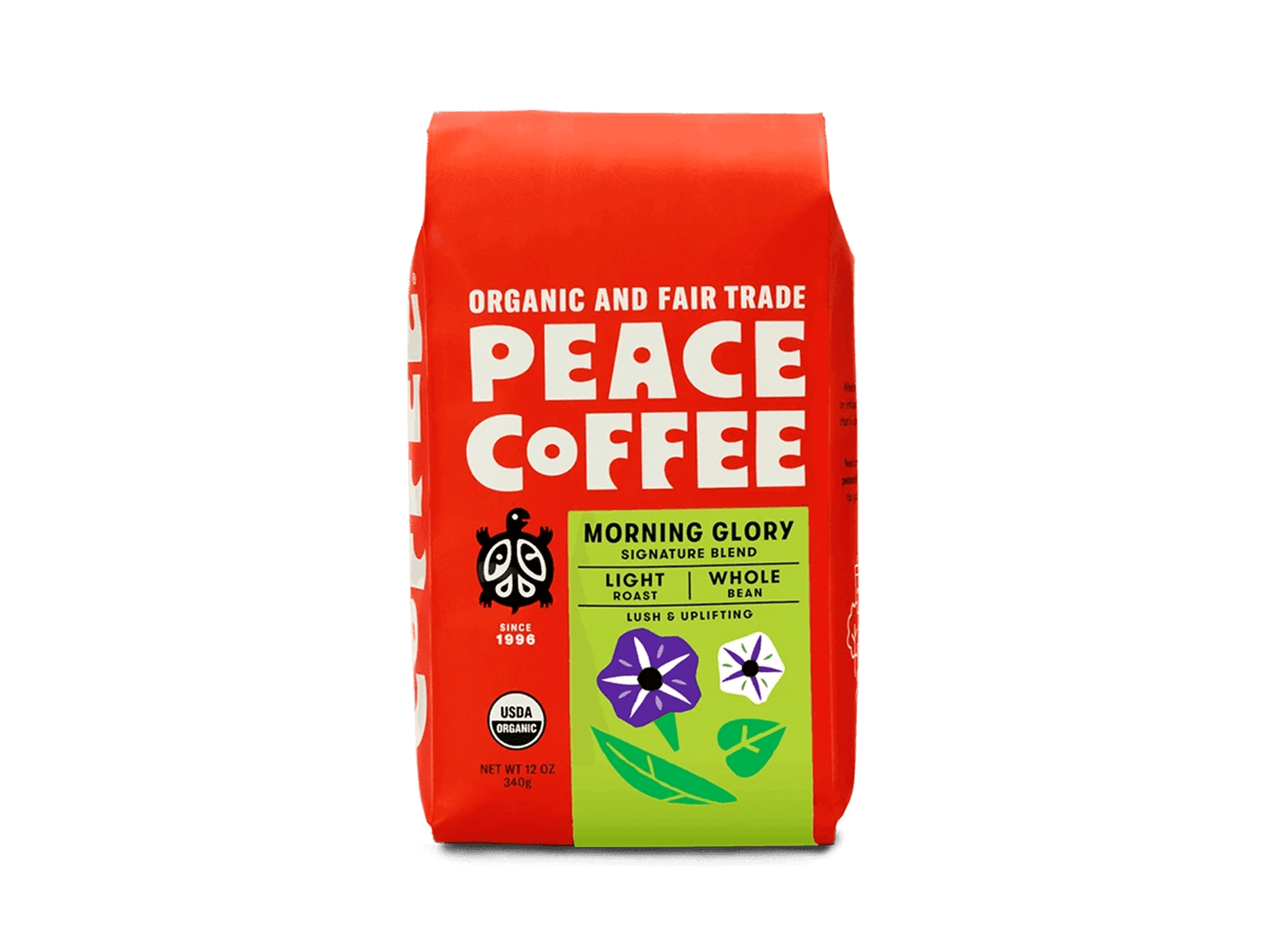
Espresso
Making espresso at home is a weird proposition. It’s inherently a process built around large scales and repeatability, like an auto assembly line, and while technically it’s possible to assemble a Ford Fusion in your garage, why would anyone want to?
At the same time though, there’s nothing quite like an espresso or an espresso drink from a cafe. No amount of finagling will turn something that comes out of a drip brewer into the same rich and syrupy experience as an espresso shot, and nothing quite like a proper espresso marries with foamy textured hot milk to create a cappuccino or latte. While there is no shortage of places to get an excellent Peace Coffee espresso drink out there, we, as Minnesotans understand that sometimes you just don’t want to leave the house. Sometimes it’s because of a polar vortex and sometimes it’s because the act of putting on real pants can just seem daunting. So here’s what to know when you’re pondering a home espresso journey.
What You Need
The Three Key Players in Home Espresso
When you’re putting together a home espresso setup, you’re really working with three important pieces: your espresso machine, your milk-frothing tool, and your grinder. They each do their own job, but when they team up, that’s when the magic happens — the same kind you get in a café, just without waiting in line.
What Espresso Really Is (In Plain Language)
Espresso is a tiny, concentrated shot of coffee made by pushing hot water through very finely ground beans. That’s it. All the talk about pressure, temperature, and flow time? That’s just what the machine handles behind the scenes so you don’t have to. If your machine can heat water hot enough, push it through the coffee with enough oomph, and your grinder can make consistently fine grounds, you’re already set up to make real espresso at home.
For Fans of Silky Milk Drinks
If you love lattes, cappuccinos, or any drink with that velvety, café-style milk, you’ll want a frothing tool that can create smooth, creamy foam — the kind that’s thick and luxurious, not bubbly or airy. This usually means a machine with a decent steam wand or a reliable stand-alone frother.
A Quick Note on Cost (Don’t Panic!)
Here’s the honest part: the equipment that handles all of this exceptionally well often starts around $1000. And at that price, the machines can still be a little finicky or less user-friendly than you’d hope. But don’t worry, not everyone needs a top-tier machine to make fantastic espresso at home. Different setups work for different budgets, skill levels, and kitchen vibes.
Finding the Right Fit for You
There’s a whole range of espresso machines out there, from simple and affordable to full-on café-level powerhouses. No matter your experience or how much you want to spend, there’s something out there that can help you create delicious, cozy espresso drinks in your own kitchen. Let’s explore the options so you can find the one that feels just right.
Try a “DIY” Espresso-Style Setup
If you’re up for a little elbow grease, you can absolutely whip up café-style drinks at home for a lot less than a full espresso rig.
Stovetop Moka Pot
One of the most classic options: the Bialetti Moka pot uses the steam pressure from heated water to force water through ground coffee. When you dial it in right, you get a bold, strong brew — not exactly café espresso, but close enough for a delicious latte at home.
Press-Style Piston Brewer
Another great tool: the AeroPress uses manual piston pressure to extract a rich, concentrated coffee shot. It won’t hit true espresso specs, but mixed with milk it gives a lovely café-style drink.
Handy Steam Wand / Frother Add-On
For that creamy, silky milk that completes café-style drinks, check out the Bellman Stovetop Milk Steamer. It’s essentially a mini espresso-machine steam wand that sits on your stove. No huge machine required.
A Few Notes
- These options are cheaper than full espresso machines — a great way to get started.
- They require a bit more user input (you’ll be heating things, watching, controlling) than a “push-button” machine.
- They might not hit exactly what a café machine does, but if you’re looking for delicious and home-pleasant, they’re solid choices.
- As always, fresh beans + good grind + consistency = huge payoff.
Steam-Driven Home Machines (a.k.a. the Budgetest of Budget Options)
A Quick Look Back: How Early Espresso Machines Worked
In the early 1900s, espresso machines were… well, a little wild. They relied on a single boiler filled with water that was heated way past boiling. As the steam built up inside, the pressure forced that super-hot water through a puck of coffee. It was faster than anything people had seen before — a total coffee breakthrough for its time.
But there was a catch: water that hot pulls out the harsher, more bitter flavors in coffee. So even if everything else was perfect, the result was often sharp, dry, and not exactly the smooth, balanced espresso we know today. Modern café machines don’t brew with steam pressure anymore, and for good reason. Today’s espresso is made with carefully controlled water temperature and consistent pump pressure — not runaway steam pressure — which creates a sweeter, richer, more balanced shot. But! Steam-powered brewing hasn’t disappeared entirely…
A few very affordable home machines still use old-school steam pressure because it’s the cheapest way to make a “pressurized hot water system.”
Two examples you’ll still see around:
These little machines do produce a strong, espresso-ish cup... but they come with some compromises:
- The coffee tends to be bitter
- Shots come out slowly
- They can be a bit messy
- They aren’t very consistent
Thermoblock Machines: A Solid Middle-Ground Option
If you want to steam milk and pull espresso at the same time — without jumping all the way up to a high-end dual-boiler machine — a thermoblock machine might be your sweet spot. Instead of relying on one big boiler to do everything, a thermoblock quickly superheats tiny amounts of water on demand.
That means:
- Your machine can keep the main water supply at espresso-friendly temperatures
- At the same time, it can heat small bursts of water hot enough to steam milk
In everyday terms: you can pull your shot, steam your milk, and have both ready at once — no long waiting around for the machine to switch modes.
The Trade-Off: Milk Texture
Thermoblock steam is handy and fast, but it’s not as powerful as steam from a dedicated boiler. That means your milk may not get as silky or as micro-foamed as what you’d see in a café. If being able to pour latte art is a must-have, a thermoblock machine may leave you wanting a little more.
Standard vs. Pressurized Portafilters
One big perk of machines in this category: Most are good enough to use standard portafilters (the kind cafés use) instead of pressurized ones.
Standard portafilters:
- Give you more control
- Provide better flavor clarity
- Require a little more practice and a consistent grind
They have a steeper learning curve, but for anyone who loves the rich, velvety body of real café espresso, it’s absolutely worth it. A quick tip is you can usually tell a machine uses a standard portafilter if it has a pump pressure gauge on the front.
Two well-loved machines in the thermoblock category:
- Breville Infuser A fantastic machine for espresso lovers who want quality, ease of use, and steady performance.
- Crossland CC1 A compact machine that uses professional-grade parts and adds some thoughtful features without taking up your whole counter.
Heat Exchangers vs. Dual Boilers (Friendly Breakdown)
Heat Exchanger Machines
A heat exchanger is basically a clever shortcut. There’s one big steam boiler, and running through it is a tube that quickly heats fresh water as it passes through.
- Pro: More affordable than dual boilers
- Con: Brew temperatures can sometimes be a little less precise
Dual Boiler Machines
Dual boilers take the “no compromises” approach. One boiler handles espresso brewing, the other is dedicated to steaming milk.
- Pro: Super consistent, super accurate
- Con: Usually more expensive
Both designs give you the real café experience: you can steam milk while pulling a shot, and the steam pressure is strong enough to craft silky, glossy milk for latte art.
Why These Machines Shine
Machines with heat exchangers or dual boilers borrow the same architecture cafés use — just in a smaller, kitchen-friendly size. That makes them ideal for:
- Busy households with multiple coffee drinkers
- Couples or roommates who want their drinks now, not one after another
- Small offices where café runs are starting to look like a line item on the budget
- Anyone who wants café-quality speed and consistency without leaving home
- These machines are built to keep up.
Two Great Options to Look At
Nuova Simonelli Oscar II (Heat Exchanger)
An excellent, well-priced heat exchanger machine with serious café credentials.
Breville Dual Boiler
A shockingly affordable dual-boiler machine with features normally found on much pricier setups.
When You’re Basically Buying a Cafe Machine for Home
Once you get into the world of dual-boiler, pump-driven espresso machines, you’re basically looking at a smaller version of what cafés use. But even at this level, there are a few things worth knowing before you welcome one into your kitchen. This is the truth every home-barista should know is that espresso machines eventually break. They live under high pressure and high heat , it’s part of the deal. It’s not a matter of if something will need service, but when.
That said…
- Higher-quality machines tend to last longer
- Machines built with professional parts are easier to repair
- Cheaper machines often have proprietary parts, meaning you may need to mail them in for service — or they may not be repairable at all
- If you’re handy with tools, pro-grade machines are much more DIY-friendly. And if not, any local espresso tech can work on them easily.
Build Quality Matters (Both for Looks & Longevity)
The materials a machine is made from change everything:
- Stainless steel = durable, attractive, more expensive
- Plastic housings = lighter, cheaper, less long-lasting
And don’t forget the pump:
- Rotary pumps = quiet, smooth, reliable (and pricier)
- Vibratory pumps = louder and more basic, but common in lower-cost machines
These details don’t just impact performance — they shape how your machine feels in your kitchen day after day.
The Peak of Home Espresso: La Marzocco GS3 & Linea Mini
If there’s a “dream machine” tier, this is it. La Marzocco’s GS3 and Linea Mini are built almost exactly like commercial café machines, just scaled down for home use.
They offer:
- Professional-grade internal parts
- Extremely reliable electronics
- Full stainless-steel construction
- A whisper-quiet rotary pump
- Serviceability that techs love
- Optional in-home training with a local coffee expert when you purchase
They are expensive — reliable-used-car expensive — but if you’re the type who buys lattes every day, machines like these can actually pay for themselves over 5–10 years depending on your coffee habits.
Bottom Line
If you’re investing in a high-end home machine:
- Expect café-quality results
- Expect occasional repairs
- Expect long-term durability if you buy well
- Expect a much quieter, more enjoyable daily experience with better-built machines
Why Your Grinder Matters Just As Much As Your Espresso Machine
Here’s the secret most new home-baristas don’t realize: Your espresso machine makes the espresso, but your grinder makes it taste good.
No matter what machine you own, a reliable grinder is the foundation of great espresso. Fresh, consistent grounds make the difference between “pretty good” and “wow, this is café-level.”
Why Preground Espresso Doesn’t Work
Espresso is picky — really picky. Every machine pulls shots a little differently, which means the grind needs to be adjusted to match your specific setup.
Preground espresso can’t be adjusted, and even the “right” grind for one machine will be wrong for another. Once it’s wrong, it stays wrong… and usually the whole bag ends up going to waste.
Fresh grinding isn’t just a quality boost — it’s the only way to make espresso work.
Why Uniform Grounds Are So Important
Espresso extracts in about 20–30 seconds, so the grounds need to be incredibly uniform. If some pieces are big and some are tiny, you’ll get a mix of under-extracted (sour) and over-extracted (bitter) in the same shot.
That’s why:
- Blade grinders don’t work for espresso
- Most cheap burr grinders don’t work either — they grind too inconsistently
For good espresso, you need a grinder designed to go fine and stay consistent.
Entry-Level Options (Good for Starting Out)
Capresso Infinity
This is the cheapest grinder that can technically grind fine enough for espresso. But with only 16 grind settings, you may find that one click is too coarse and the next is too fine. The burrs also wear out fairly quickly.
Baratza Virtuoso+
A solid all-around grinder that works for espresso and drip/pour-over. If you want one grinder to do everything reasonably well, this is a great middle-ground choice.
Dedicated Espresso Grinders (Best for True Espresso Lovers)
If you want to dial in truly excellent espresso and get consistent results every day, a dedicated espresso grinder is the way to go.
Baratza Sette 270Wi
Super high-precision with 270 grind settings and a built-in scale. Great for dialing in flavor. Best for a few shots per day — not designed for heavy use.
Rancilio Rocky SD
A tank of a grinder. Accurate, reliable, and capable of making shot after shot without overheating or drifting. A fantastic long-term espresso-only grinder.
Bottom Line
If espresso is your daily ritual, your grinder is worth the investment.
A great grinder:
- Makes your espresso sweeter and smoother
- Makes dialing in easier
- Reduces waste
- Gives you consistent café-quality results
What About Machines That Do Everything for You? (Hello, Super-Autos!)
Up until now, we’ve been talking about machines where you do the hands-on work: grinding, tamping, pulling the shot, steaming the milk. That’s the classic barista experience. But there’s another category out there: super-automatic espresso machines, lovingly called “super-autos.” These machines take over almost every step for you.
What Super-Autos Actually Do
Super-autos are filled with pistons, sensors, valves, and tiny internal pathways that handle the whole process automatically. Basically, you press a button, and the machine handles the rest.
They can:
- Grind the coffee
- Dose it
- Tamp it
- Pull the shot
- Steam and pour the milk
Two Things You Should Know About Super-Autos
1. Automation always costs more
All of that engineering comes with a higher price tag — even if the final drink quality is similar to a less expensive manual setup.
2. They still need regular calibration
There is no such thing as a true “set it and forget it” espresso machine. Even the fanciest super-autos need occasional fine-tuning to keep the coffee tasting good. Think of them like espresso robots that still need you to tell them what “tastes right.”
How Super-Autos Compare to Manual Machines
As a general rule: A super-auto gives you about the same drink quality as a manual machine that costs half as much. So you’re paying for convenience, not necessarily better coffee.
For example:
- Saeco Incanto: Makes espresso comparable to a mid-range dual-temp home machine
- Breville Oracle Touch: Automates much of what the Breville Dual Boiler does manually
These machines can be wonderful if you want café-style drinks with minimal effort, but they aren’t usually the best option for someone who enjoys hands-on espresso crafting.
Bottom Line
Super-autos are great when you want:
- Convenience
- Consistency
- One-touch drinks
- Very little cleanup
But if you want the very best coffee or love the barista ritual, manual (or semi-automatic) machines tend to give you more flavor and more control for the price.
The Little Extras That Make Home Espresso Easier (and More Fun)
Espresso setups come with a handful of small but important accessories. They’re not as exciting as the machine itself, but they make a huge difference in how easy and enjoyable your daily coffee ritual feels. Here’s what to expect — and what’s actually worth buying.
For Pulling Shots
A Proper Tamper
If your machine uses a traditional portafilter, you’ll need a tamper.
- Plastic tampers: skip them
- Aluminum tampers: fine
- Steel tampers: the best choice — they feel solid, pack evenly, and last forever
Just make sure you buy the right size for your portafilter.
For Everyday Cleanup
A Knock Box
This is where you toss your spent espresso pucks. Cleaner, easier, and far less messy than banging your portafilter over the trash can.
Extra Kitchen Towels
You’ll use these constantly — to wipe the steam wand, dry the portafilter, clean up splashes, and generally look like someone who knows what they’re doing.
A Small Brush
Coffee grounds get everywhere. A simple brush keeps things tidy without fussing.
Cleaning Supplies
Machines and grinders work better and last longer when they’re cleaned regularly. A little care goes a long way.
For Accuracy (If You Love Dialing Things In)
A Scale or Measuring Glass
If you like precision, a scale helps you measure both your dose and the amount of espresso you pull. It’s the easiest way to make your shots consistent and delicious.
For Enjoying Your Finished Drink
A Good Mug
This one’s simple: the right mug just makes the moment. Cozy, handmade, chunky, minimalist — whatever you like. You’ll be using it every day, so pick one that feels good in your hands.







